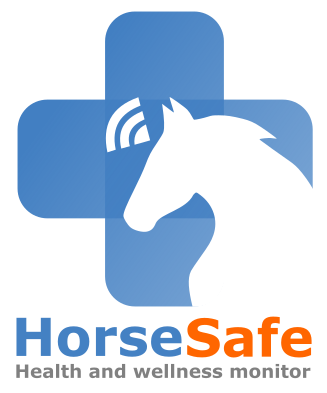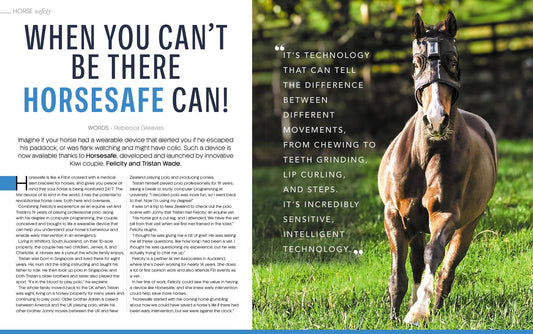
Just like humans, horses need quality sleep to maintain their well-being. However, understanding and monitoring equine sleep patterns can be challenging due to the nature of their sleep habits. This blog explores how HorseSafe can help horse owners and caregivers gain valuable insights into their horses' sleep patterns, ultimately contributing to better overall care.
The Importance of Sleep for Horses
Horses have unique sleep patterns that differ significantly from humans. They typically sleep for short periods throughout the day and night, with their sleep divided into two main types: slow-wave sleep (SWS) and rapid eye movement (REM) sleep. Both types are crucial for their physical and mental health.
- Slow-Wave Sleep (SWS):
- This is a deep sleep stage where the horse's brain waves slow down. It usually occurs while the horse is standing, as their unique locking mechanism in the legs allows them to rest while remaining upright.
- Rapid Eye Movement (REM) Sleep:
- REM sleep is essential for memory consolidation and overall brain function. Horses must lie down to enter REM sleep because it requires complete muscle relaxation.
Challenges in Monitoring Equine Sleep
Monitoring a horse's sleep patterns manually can be difficult due to their sporadic sleep habits and the need for continuous observation. Without proper monitoring, issues such as sleep deprivation or disturbances can go unnoticed, potentially leading to health problems.
How HorseSafe Helps
HorseSafe's advanced monitoring system provides an effective solution for tracking and understanding equine sleep patterns. Here’s how HorseSafe can assist:
- Continuous Monitoring:
- HorseSafe continuously monitors your horse's activity levels, providing data on periods of rest and activity. This helps identify when your horse is sleeping and for how long.
- Behavioural Analysis:
- The system tracks specific behaviours associated with sleep, such as lying down. This data is crucial for distinguishing REM sleep.
- Health Alerts:
- If HorseSafe detects abnormal sleep patterns or disturbances, it sends real-time alerts to the owner. This early detection allows for timely intervention to address potential issues.
- Detailed Reports:
- HorseSafe generates detailed reports on your horse’s sleep patterns over time. These insights can help you and your veterinarian make informed decisions about your horse’s care.
Benefits of Monitoring Sleep with HorseSafe
- Early Detection of Issues:
- By continuously monitoring sleep patterns, HorseSafe can identify irregularities that may indicate health problems, such as pain, discomfort, or environmental stressors.
- Improved Health and Performance:
- Ensuring your horse gets adequate sleep can lead to better overall health, improved mood, and enhanced performance. Proper rest is essential for muscle recovery, cognitive function, and immune system support.
- Informed Care Decisions:
- With detailed sleep data at your fingertips, you can make more informed decisions about your horse’s environment, routine, and overall care. Adjustments can be made to optimise their sleep and well-being.
- Peace of Mind:
- HorseSafe provides peace of mind, knowing that your horse’s sleep patterns are being monitored around the clock. You can rest easy knowing that any issues will be promptly identified and addressed.
Conclusion
Understanding and monitoring equine sleep patterns is crucial for maintaining your horse's well-being. HorseSafe's innovative monitoring system offers a comprehensive solution for tracking sleep, providing valuable insights and early detection of potential issues. By utilising HorseSafe, horse owners can ensure their horses get the rest they need to stay healthy and perform at their best.



